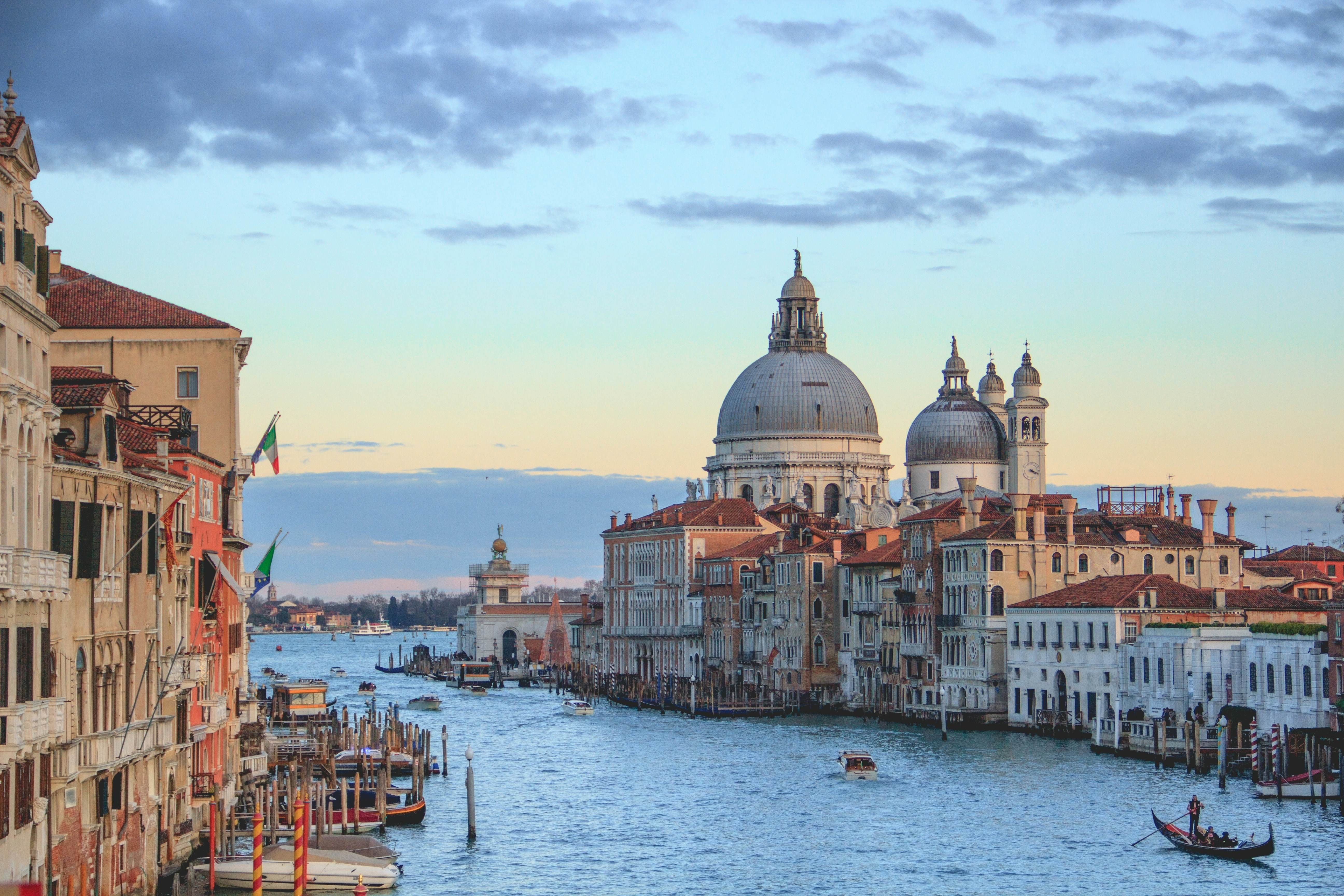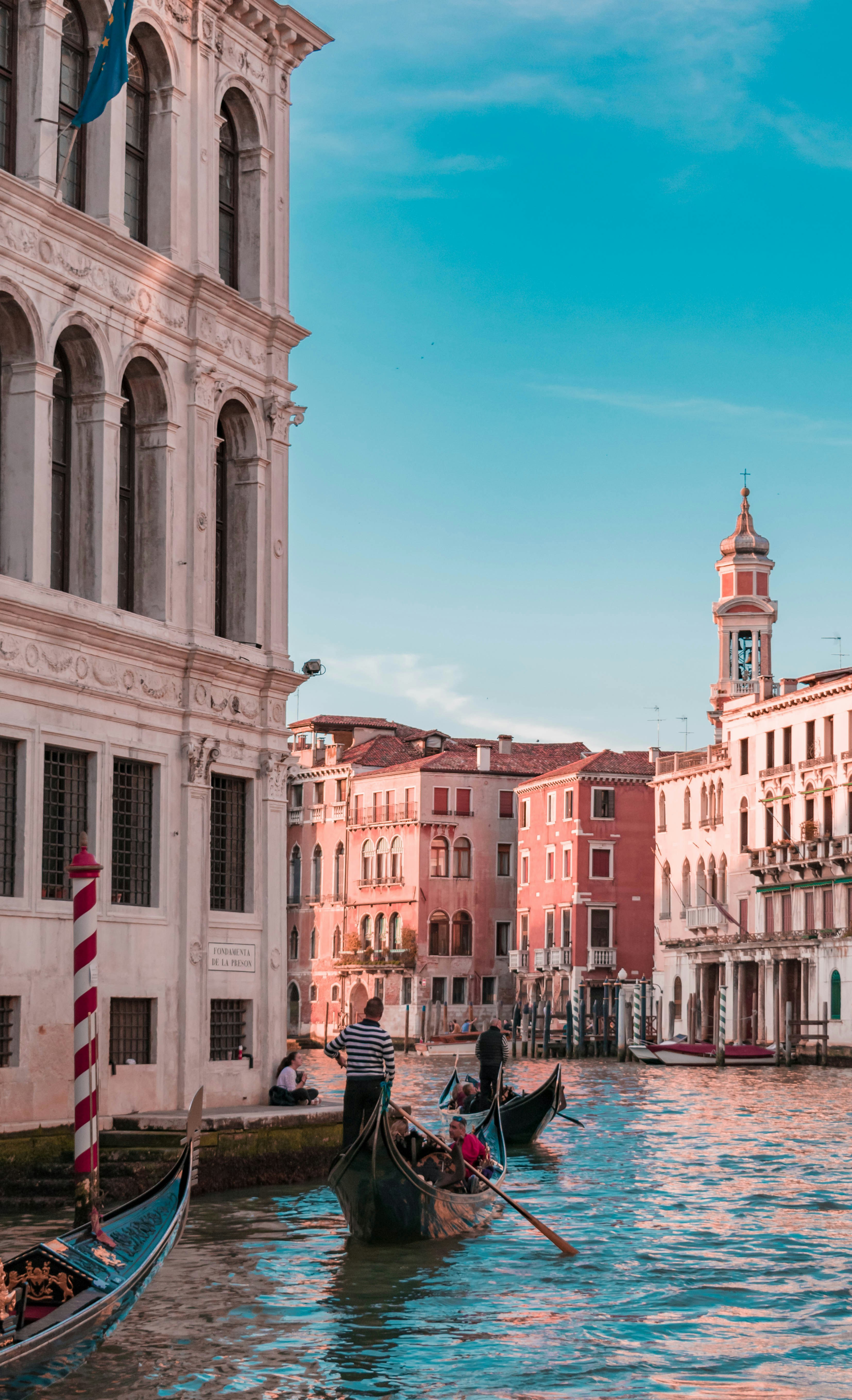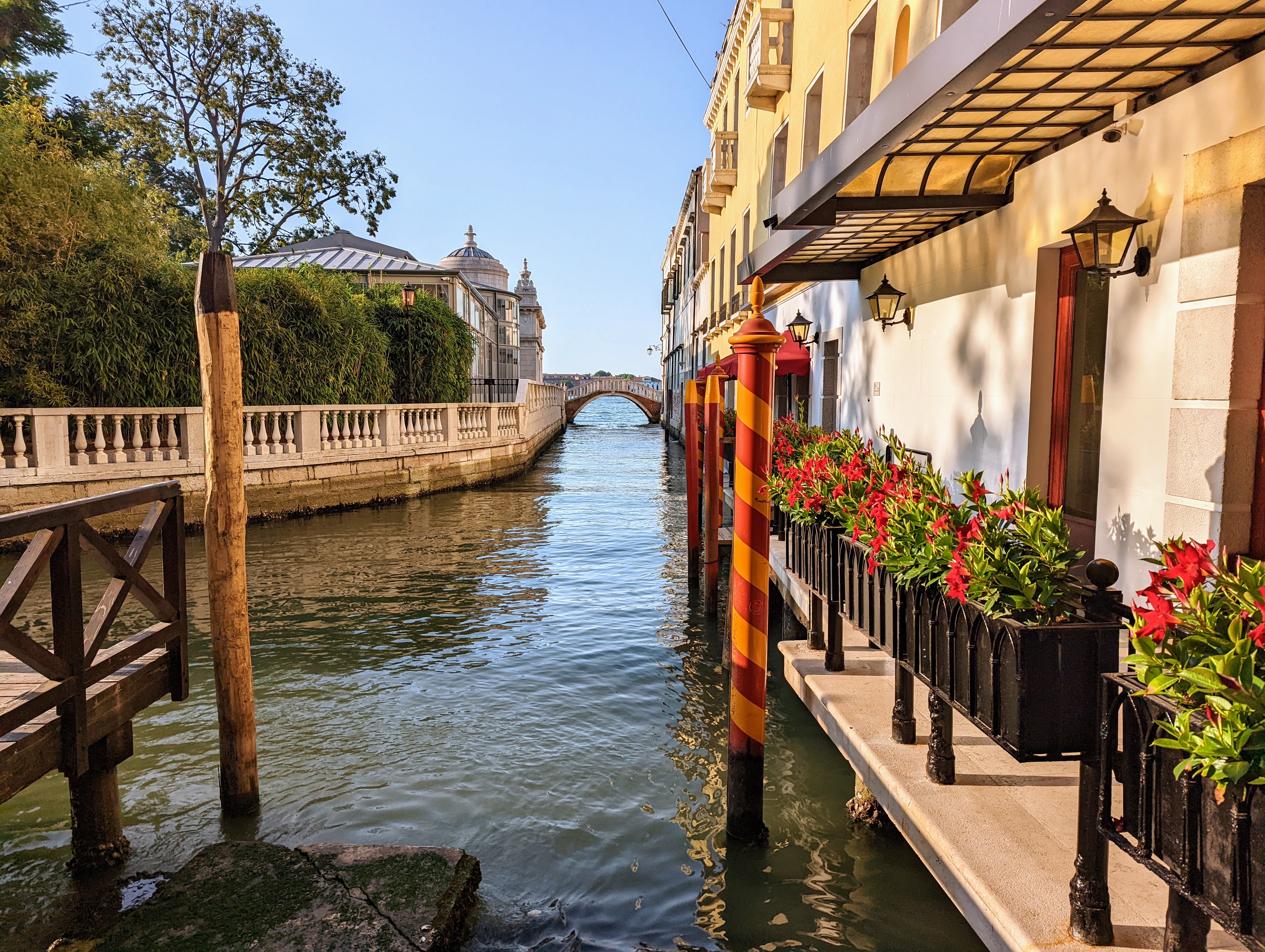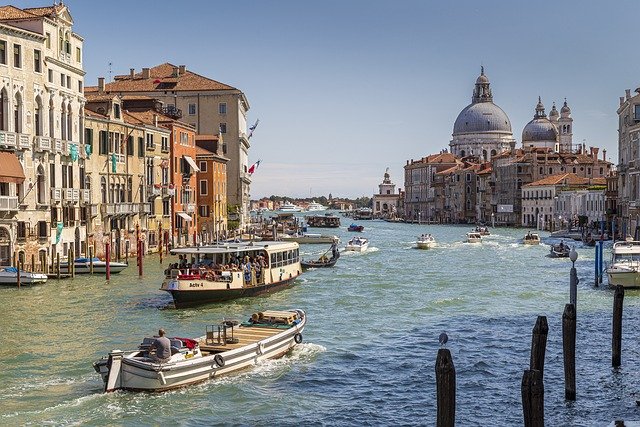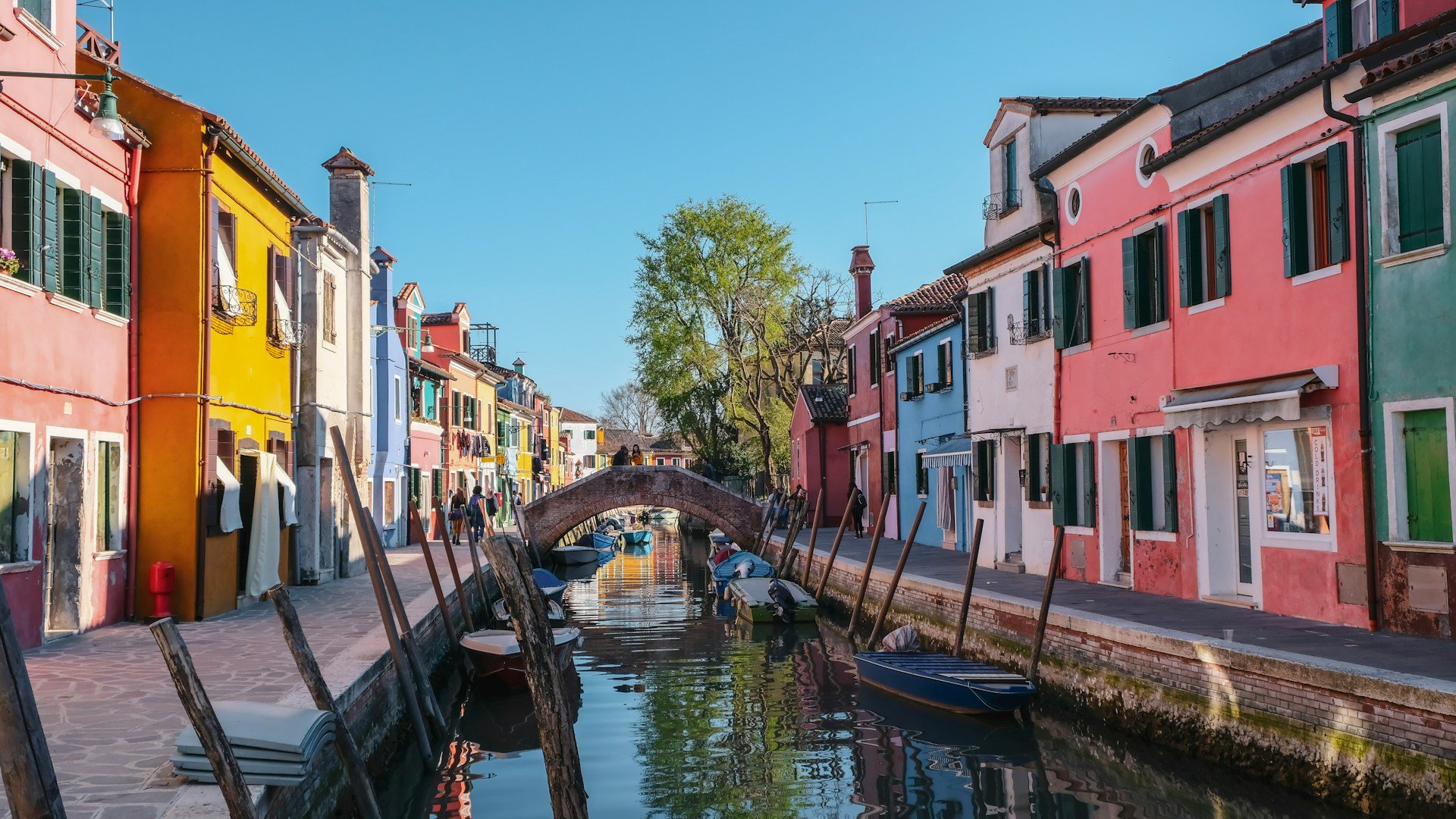VENICE, LA SERENISSIMA
Venice is one of the world’s most visited cities, attracting approximately 20 million tourists annually.
Its history dates back to the 5th century when refugees fleeing barbarian invasions settled on the islands of the Venetian Lagoon. By the 9th century, Venice had become a powerful maritime republic, dominating trade between Europe and the East. Its Golden Age in the 15th century saw immense wealth and cultural flourishing, leaving behind a legacy of grand palaces, churches, and art.
What Makes Venice Unique
Venice is built on 118 small islands connected by bridges and separated by canals, all situated in the Venetian Lagoon along the Adriatic Sea.
Its traditional title, La Serenissima, means "The Most Serene", and dates back to Venice’s Golden Age.
Venice is not just a city - it's an experience. This city on the water is unlike any other place on earth. Its winding canals, historic palazzos, and vibrant squares have inspired artists and writers for centuries. It's a place that’s truly unique with an allure that few other places can match.
When to Visit Venice
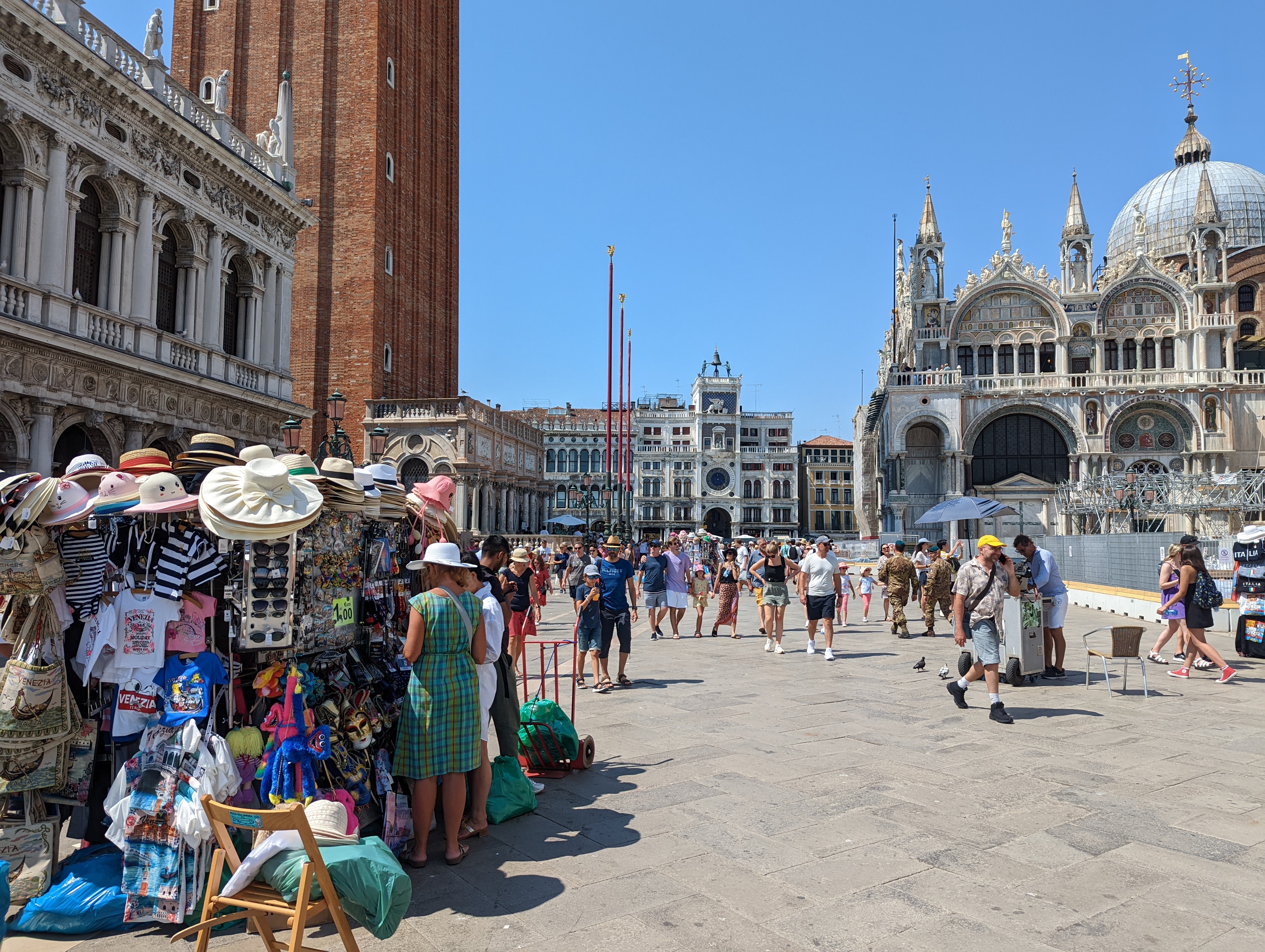 Piazza San Marco in Summer
Piazza San Marco in SummerVenice is a year-round destination, but some seasons are quieter and less crowded than others.
- Winter, Spring, and Autumn: These are the best times to visit, with fewer tourists (except during Carnival). The cooler air and smaller crowds allow you to enjoy the city at a slower pace.
- Summer: In summer, the city is packed with cruise passengers, day-trippers, and holidaymakers. Overcrowding peaks, and navigating the main attractions can feel overwhelming.
- Carnival: Carnival brings a magical energy to Venice with its elaborate costumes and festivities. However, it’s also the most crowded time of year, with sky-high prices and packed streets. Walking through the most popular parts of Venice during Carnival is an ordeal as the streets and places such as St Mark’s Square are literally jam-packed. Prices are also sky-high, and food quality in restaurants around St Mark’s Square leaves much to be desired.
To decide which season suits you best, have a look at this guide here.
To check whether your vacation dates coincide with Venice Access Fee days, click here.
Travelling Around in Venice
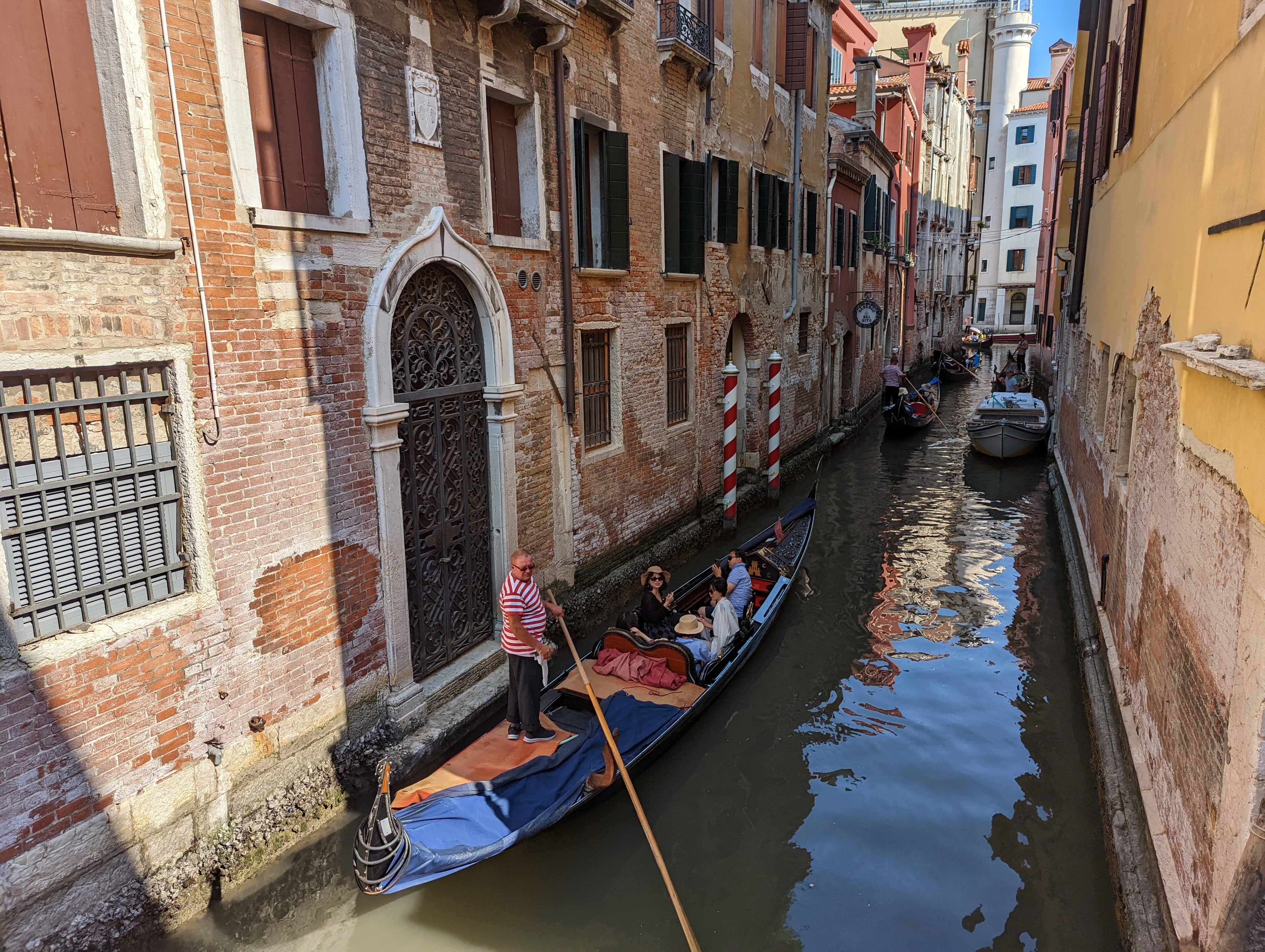
In Venice, you won’t find cars or buses, unless you’re on the Lido.
The only ways to travel around in Venice are:
- On Foot: The city’s narrow street and hidden alleys are best explored this way
- By Boat: Options include vaporetti (water buses), traghetti (gondola ferries), and water taxis, though the latter can be expensive.
For more information on navigating Venice, click here.
Experiencing Venice: Early Mornings and Late Nights
I have found that the best times to see Venice at its best and to get the best photos is by exploring early in the morning or late at night.
Early Morning: This is the best time to visit landmarks like the Bridge of Sighs or the Rialto, before most tourists are up and about, and before the day-trippers arrive.
An early start also pays off if you’re there during Carnival. Piazza San Marco and the Bridge of Sighs come alive with people in fabulous costumes, posing for photo shoots in the soft morning light. And yes, you can join in and take pictures too—I’ve done it many times!
Early morning, you can also get a glimpse of everyday Venice: barges delivering goods cruising down the Grand Canal, or friendly neighbourhood cats greeting delivery persons hoping for a treat.
You can sit down in a bar with the locals and have coffee and a cornetto for breakfast, or travel peacefully on the vaporetti without being squashed.
Late Night: Another good time to see Venice is late at night, after the crowds leave. You can stroll through the quiet piazzas, listen to the gentle lap of water against gondolas, catch musicians performing in the cafes.
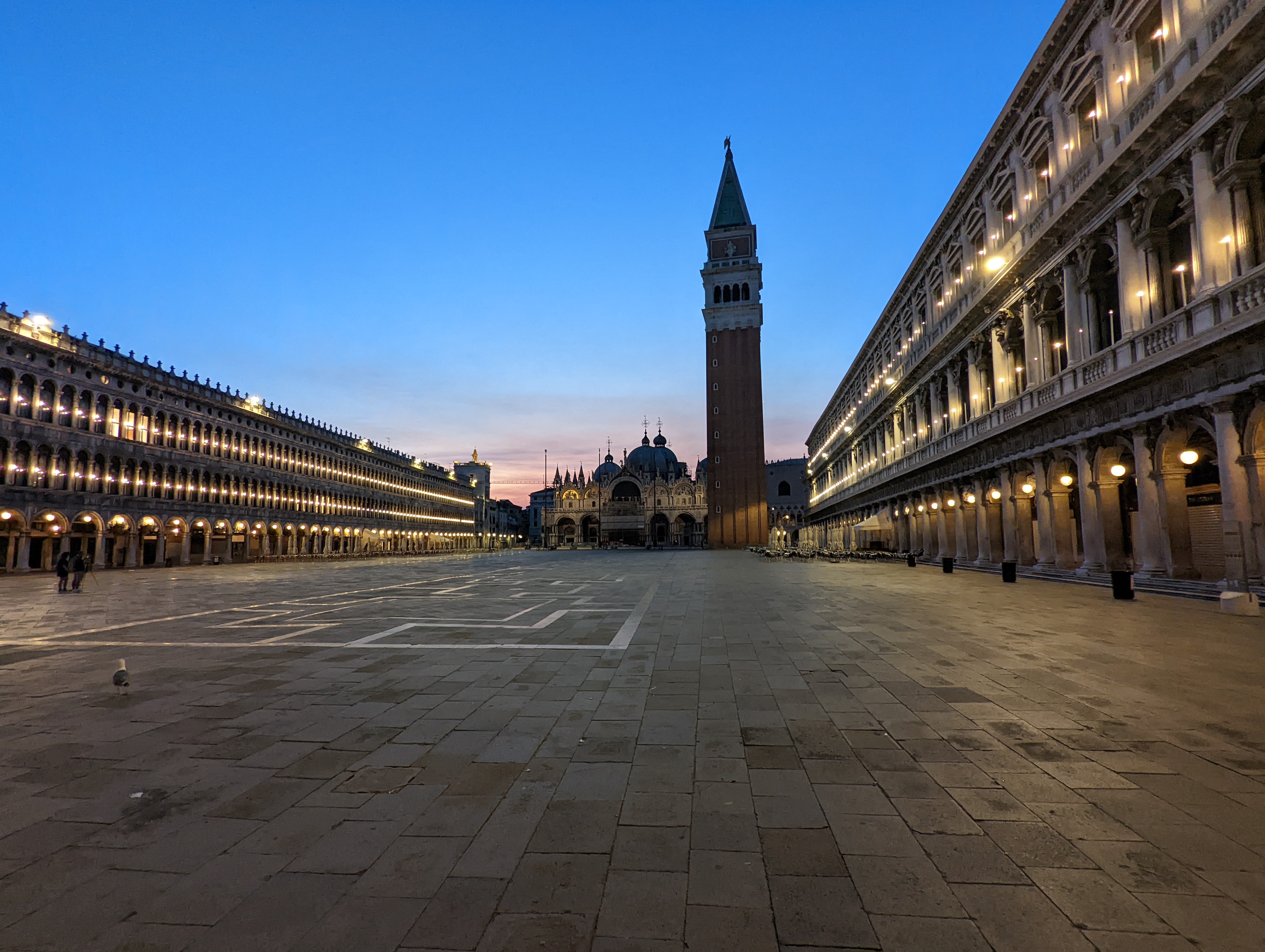 Piazza San Marco at Night
Piazza San Marco at NightWander Off the Beaten Track: Escaping the Crowds in Venice
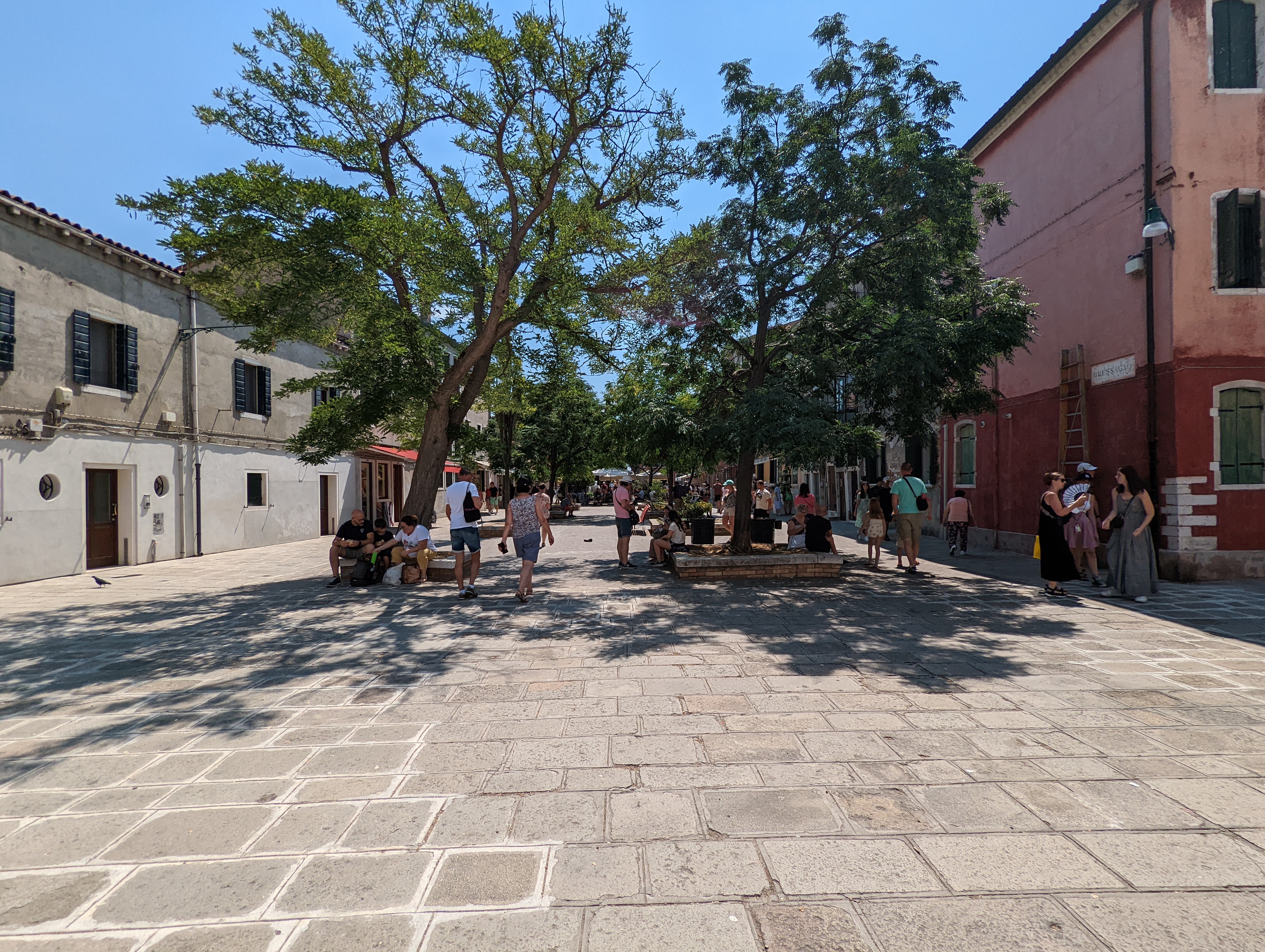 A quiet square off the beaten track
A quiet square off the beaten trackVenice is much more than its famous landmarks. To escape the crowds, wander beyond St Mark’s Square, the Rialto, and the Riva degli Schiavoni. You’ll find quieter streets and a more authentic side of the city.
I particularly like wandering around the Dorsoduro district, which you can access from the bridges on the Grand Canal, such as the Rialto or Accademia bridges, or by vaporetto. Known for its artistic vibe, this district offers charming squares, very good restaurants and stunning views.
The island of Giudecca is also very quiet and provides some of the most breath-taking vistas of the lagoon.
Murano and Burano, famous for glassmaking and lacework, are also generally less crowded, especially in the off-season.
For more information on the islands of Venice, click here.
The
Best Way to See Venice
The best way to see Venice is to get lost in its calli, away from the main attractions, and discover a side of the city that feels like your own secret.
Wandering is an amazing way to discover a more authentic Venice, and less touristy restaurants and bars.
Wandering aimlessly through Venice, I’ve discovered beautiful churches and palaces that aren’t mentioned in any guidebook, sleepy little piazzas where you can have a quiet drink and read a book, trattorie serving very good food typical of the Veneto region, and artisanal workshops where I’ve watched craftsmen create traditional leather masks by hand.
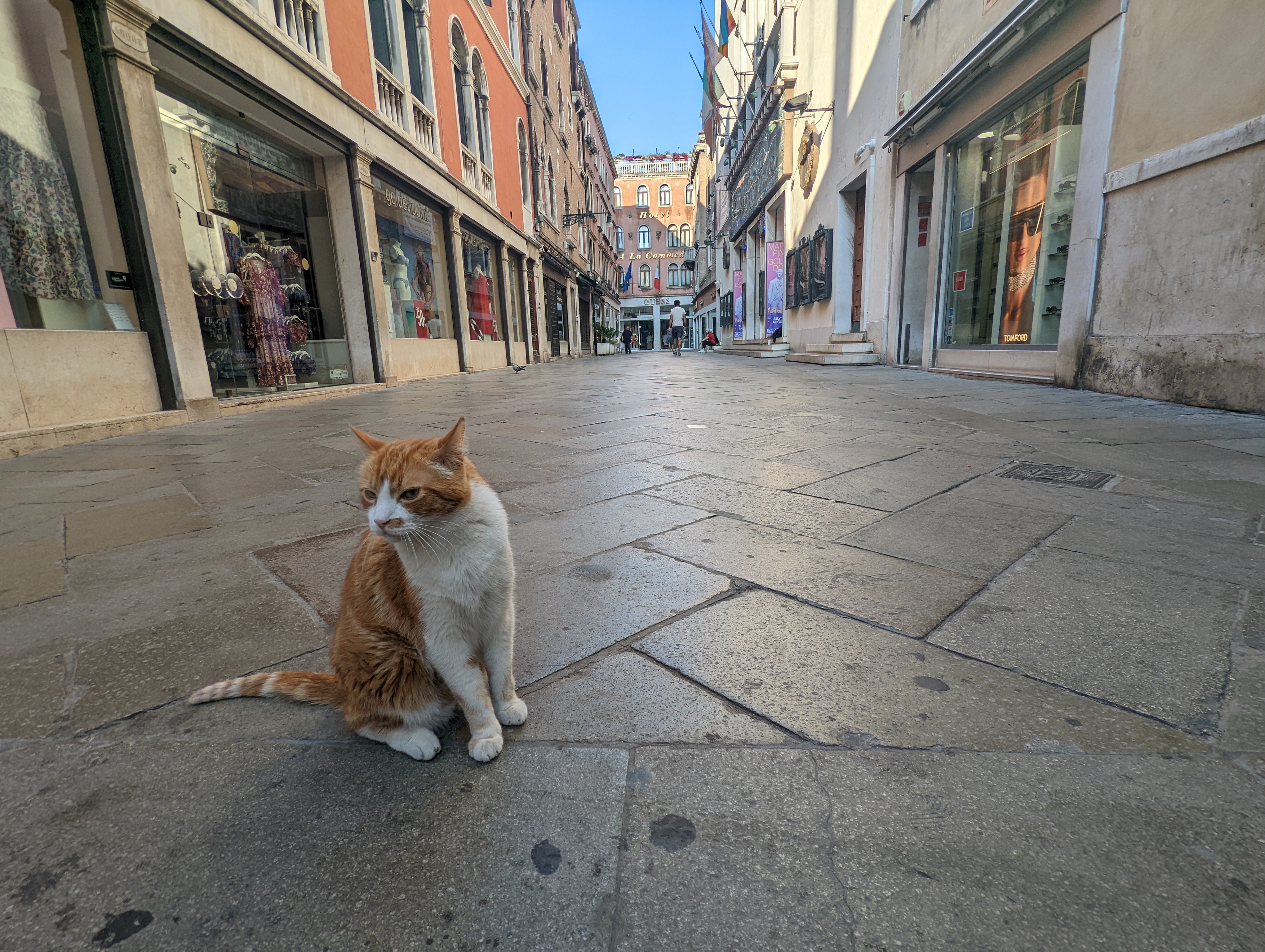 Venetian cat I met during early morning wanderings
Venetian cat I met during early morning wanderingsVenice is a city of contrasts—grand yet intimate, bustling yet serene. Whether you’re drawn to its historic landmarks, quiet corners, or the everyday rhythm of life on the water, there’s no place quite like it.
